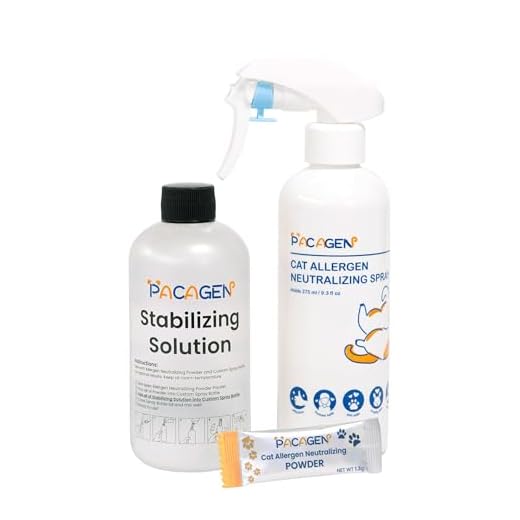



When I notice thinning patches around my auditory flaps, it raises immediate concern. Regular grooming and observation help track changes in my appearance. If you see similar issues, consider examining the affected area for signs of irritation or redness.
Allergies can be a primary culprit. Many of us react to pollen, dust mites, or certain foods. A visit to the vet can help confirm if allergies are the issue, leading to appropriate treatment or dietary adjustments. Keeping an eye on seasonal changes may also provide clues.
Infections are another possibility. Bacterial or fungal infections might cause discomfort and hair loss. If scratching or shaking becomes frequent, a veterinary checkup is essential to diagnose and treat any underlying conditions. Maintaining a clean environment can aid in prevention.
Stress and anxiety often manifest in unusual behaviors, including excessive grooming. If my companions seem anxious or stressed, providing a calm environment with plenty of enrichment can help alleviate the issue. Behavioral adjustments can significantly impact overall well-being.
Lastly, genetics play a role. Some breeds are predisposed to specific skin conditions or hair loss. Researching breed-specific concerns can offer insights into potential issues. Regular check-ups with a veterinarian can help catch any hereditary conditions early.
Common Causes of Ear Fur Loss in Cats
Allergies rank high on the list of issues affecting the coat around the auditory area. Environmental allergens like pollen, dust mites, or mold can trigger reactions, causing the skin to become inflamed and resulting in hair falling out. Identifying and minimizing exposure to these irritants is key for relief.
Parasitic infestations, particularly from fleas or mites, can lead to significant discomfort. The itchiness prompts excessive scratching, which ultimately results in the loss of hair. Regular treatments and preventive measures are necessary to keep those pesky critters at bay.
Infections and Skin Conditions
Infections, whether bacterial or fungal, can also contribute to hair thinning. Signs may include redness, swelling, or an unpleasant odor. Seeking veterinary care for proper diagnosis and treatment is crucial to resolving these issues.
Hormonal Imbalances
Endocrine disorders, such as hyperthyroidism or adrenal gland issues, can lead to changes in the coat. Monitoring weight, appetite, and behavior can provide clues that something may be amiss. Consultation with a veterinarian will help in diagnosing and managing any hormonal concerns.
Lastly, maintaining overall health through proper nutrition is fundamental. A balanced diet affects coat quality and skin health directly. Consider researching the best dental products for cats as part of a holistic wellness approach. Keeping teeth clean contributes to overall well-being, which reflects on the fur too.
How to Treat and Prevent Ear Fur Loss in Cats
Regular grooming is crucial. Daily brushing helps to remove loose hair and debris, preventing irritation that can lead to bald patches. Use a gentle brush designed for sensitive areas to avoid causing discomfort.
Keep an eye on skin health. A balanced diet rich in fatty acids supports a healthy coat. Consider adding supplements like omega-3 or omega-6, which can improve skin condition. Always consult with a veterinarian before introducing new supplements.
Monitoring for Allergies
Watch for signs of allergies. If itching or redness occurs, it may indicate an allergic reaction. Identifying and eliminating allergens, such as certain foods or environmental factors, can help restore fur growth. If unsure, a vet can perform tests to pinpoint specific allergens.
Regular Veterinary Check-ups
Routine vet visits are essential. Professional assessments can catch underlying health issues early. Discuss any changes in grooming habits or coat condition with your vet. They may recommend treatments or medications tailored to specific issues.
If you’re curious about what else might affect your pet’s diet, check out this link: do roaches eat cat food.
Video:
When I notice thinning patches around my auditory flaps, it raises immediate concern. Regular grooming and observation help track changes in my appearance. If you see similar issues, consider examining the affected area for signs of irritation or redness.
Allergies can be a primary culprit. Many of us react to pollen, dust mites, or certain foods. A visit to the vet can help confirm if allergies are the issue, leading to appropriate treatment or dietary adjustments. Keeping an eye on seasonal changes may also provide clues.
Infections are another possibility. Bacterial or fungal infections might cause discomfort and hair loss. If scratching or shaking becomes frequent, a veterinary checkup is essential to diagnose and treat any underlying conditions. Maintaining a clean environment can aid in prevention.
Stress and anxiety often manifest in unusual behaviors, including excessive grooming. If my companions seem anxious or stressed, providing a calm environment with plenty of enrichment can help alleviate the issue. Behavioral adjustments can significantly impact overall well-being.
Lastly, genetics play a role. Some breeds are predisposed to specific skin conditions or hair loss. Researching breed-specific concerns can offer insights into potential issues. Regular check-ups with a veterinarian can help catch any hereditary conditions early.
Common Causes of Ear Fur Loss in Cats
Allergies rank high on the list of issues affecting the coat around the auditory area. Environmental allergens like pollen, dust mites, or mold can trigger reactions, causing the skin to become inflamed and resulting in hair falling out. Identifying and minimizing exposure to these irritants is key for relief.
Parasitic infestations, particularly from fleas or mites, can lead to significant discomfort. The itchiness prompts excessive scratching, which ultimately results in the loss of hair. Regular treatments and preventive measures are necessary to keep those pesky critters at bay.
Infections and Skin Conditions
Infections, whether bacterial or fungal, can also contribute to hair thinning. Signs may include redness, swelling, or an unpleasant odor. Seeking veterinary care for proper diagnosis and treatment is crucial to resolving these issues.
Hormonal Imbalances
Endocrine disorders, such as hyperthyroidism or adrenal gland issues, can lead to changes in the coat. Monitoring weight, appetite, and behavior can provide clues that something may be amiss. Consultation with a veterinarian will help in diagnosing and managing any hormonal concerns.
Lastly, maintaining overall health through proper nutrition is fundamental. A balanced diet affects coat quality and skin health directly. Consider researching the best dental products for cats as part of a holistic wellness approach. Keeping teeth clean contributes to overall well-being, which reflects on the fur too.
How to Treat and Prevent Ear Fur Loss in Cats
Regular grooming is crucial. Daily brushing helps to remove loose hair and debris, preventing irritation that can lead to bald patches. Use a gentle brush designed for sensitive areas to avoid causing discomfort.
Keep an eye on skin health. A balanced diet rich in fatty acids supports a healthy coat. Consider adding supplements like omega-3 or omega-6, which can improve skin condition. Always consult with a veterinarian before introducing new supplements.
Monitoring for Allergies
Watch for signs of allergies. If itching or redness occurs, it may indicate an allergic reaction. Identifying and eliminating allergens, such as certain foods or environmental factors, can help restore fur growth. If unsure, a vet can perform tests to pinpoint specific allergens.
Regular Veterinary Check-ups
Routine vet visits are essential. Professional assessments can catch underlying health issues early. Discuss any changes in grooming habits or coat condition with your vet. They may recommend treatments or medications tailored to specific issues.
If you’re curious about what else might affect your pet’s diet, check out this link: do roaches eat cat food.
Video:
When I notice thinning patches around my auditory flaps, it raises immediate concern. Regular grooming and observation help track changes in my appearance. If you see similar issues, consider examining the affected area for signs of irritation or redness.
Allergies can be a primary culprit. Many of us react to pollen, dust mites, or certain foods. A visit to the vet can help confirm if allergies are the issue, leading to appropriate treatment or dietary adjustments. Keeping an eye on seasonal changes may also provide clues.
Infections are another possibility. Bacterial or fungal infections might cause discomfort and hair loss. If scratching or shaking becomes frequent, a veterinary checkup is essential to diagnose and treat any underlying conditions. Maintaining a clean environment can aid in prevention.
Stress and anxiety often manifest in unusual behaviors, including excessive grooming. If my companions seem anxious or stressed, providing a calm environment with plenty of enrichment can help alleviate the issue. Behavioral adjustments can significantly impact overall well-being.
Lastly, genetics play a role. Some breeds are predisposed to specific skin conditions or hair loss. Researching breed-specific concerns can offer insights into potential issues. Regular check-ups with a veterinarian can help catch any hereditary conditions early.
Common Causes of Ear Fur Loss in Cats
Allergies rank high on the list of issues affecting the coat around the auditory area. Environmental allergens like pollen, dust mites, or mold can trigger reactions, causing the skin to become inflamed and resulting in hair falling out. Identifying and minimizing exposure to these irritants is key for relief.
Parasitic infestations, particularly from fleas or mites, can lead to significant discomfort. The itchiness prompts excessive scratching, which ultimately results in the loss of hair. Regular treatments and preventive measures are necessary to keep those pesky critters at bay.
Infections and Skin Conditions
Infections, whether bacterial or fungal, can also contribute to hair thinning. Signs may include redness, swelling, or an unpleasant odor. Seeking veterinary care for proper diagnosis and treatment is crucial to resolving these issues.
Hormonal Imbalances
Endocrine disorders, such as hyperthyroidism or adrenal gland issues, can lead to changes in the coat. Monitoring weight, appetite, and behavior can provide clues that something may be amiss. Consultation with a veterinarian will help in diagnosing and managing any hormonal concerns.
Lastly, maintaining overall health through proper nutrition is fundamental. A balanced diet affects coat quality and skin health directly. Consider researching the best dental products for cats as part of a holistic wellness approach. Keeping teeth clean contributes to overall well-being, which reflects on the fur too.
How to Treat and Prevent Ear Fur Loss in Cats
Regular grooming is crucial. Daily brushing helps to remove loose hair and debris, preventing irritation that can lead to bald patches. Use a gentle brush designed for sensitive areas to avoid causing discomfort.
Keep an eye on skin health. A balanced diet rich in fatty acids supports a healthy coat. Consider adding supplements like omega-3 or omega-6, which can improve skin condition. Always consult with a veterinarian before introducing new supplements.
Monitoring for Allergies
Watch for signs of allergies. If itching or redness occurs, it may indicate an allergic reaction. Identifying and eliminating allergens, such as certain foods or environmental factors, can help restore fur growth. If unsure, a vet can perform tests to pinpoint specific allergens.
Regular Veterinary Check-ups
Routine vet visits are essential. Professional assessments can catch underlying health issues early. Discuss any changes in grooming habits or coat condition with your vet. They may recommend treatments or medications tailored to specific issues.
If you’re curious about what else might affect your pet’s diet, check out this link: do roaches eat cat food.









